Isophote-Constrained Autoregressive Model with Adaptive Window Extension for Image Interpolation

Fig. 1. The flowchart of the proposed method.
Abstract
The autoregressive (AR) model is widely used in image interpolations. Traditional AR models consider utilizing the dependency between pixels to model the image signal. However, they ignore the valuable patch-level information for image modeling. In this paper, we propose to integrate both the pixel-level and patch-level information to depict the relationship between high-resolution and low-resolution pixels and obtain better image interpolation results. In particular, we propose an isophote-constrained AR (ICAR) model to perform AR-flavored interpolation within an identified joint stable region and further develop an AR interpolation with an adaptive window extension. Considering the smoothness along the isophote curve, the ICAR model searches only several successive similar patches along the isophote curve over a large region to construct an adaptive window. These overlapped patches, representing the patch-level structure similarity, are used to construct a joint AR model. To better characterize the piecewise stationarity and determine whether a pixel is suitable for AR estimation, we further propose pixel- and patch-level similarity metrics and embed them into the ICAR model, introducing a weighted ICAR model. Comprehensive experiments demonstrate that our method can effectively reconstruct the edge structures and suppress jaggy or ringing artifacts. In the objective quality evaluation, our method achieves the best results in terms of both PSNR and SSIM for both simple size doubling (2times) and for arbitrary scale enlargements.
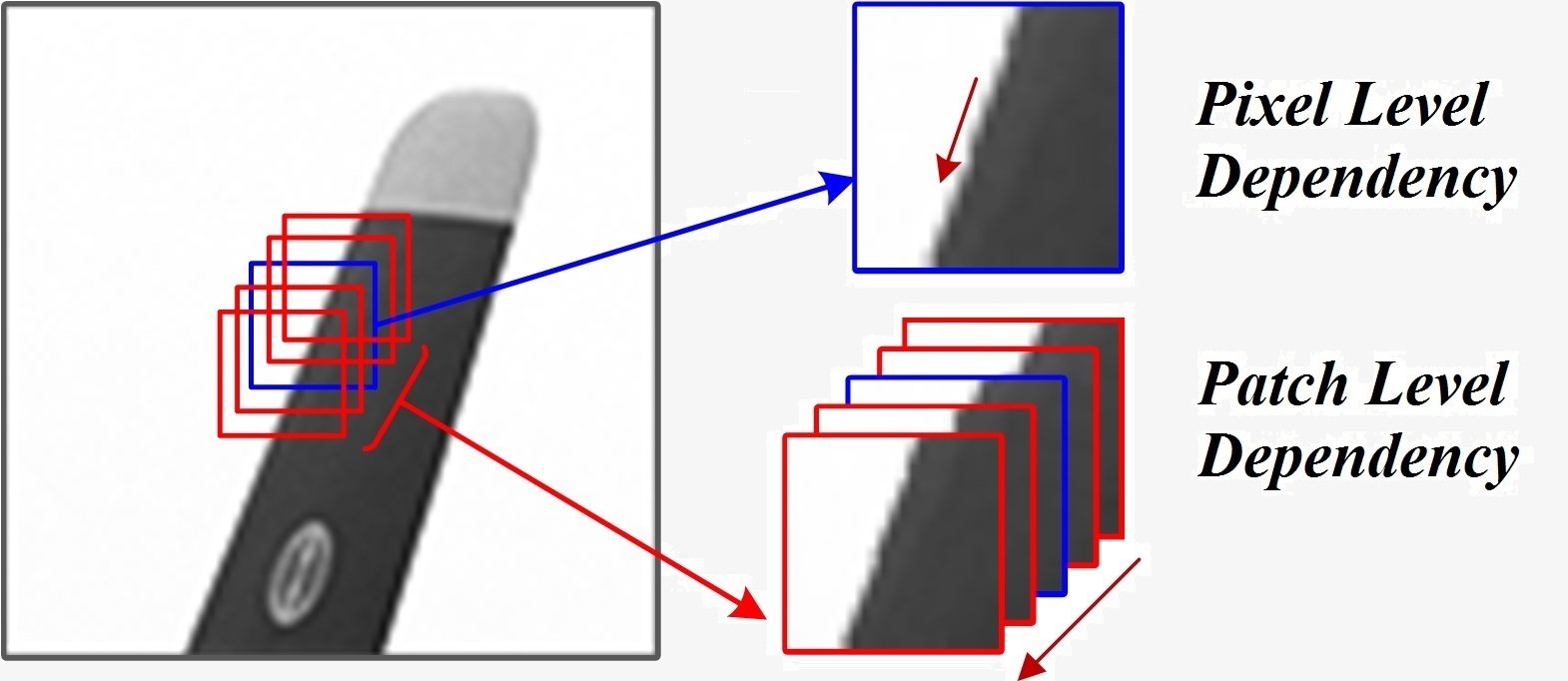
Fig. 2. Illustrations for the two types of dependencies exploited in the proposed ICAR. The pixel-level dependency (blue border) describes the statistical properties among pixels within the center patch , while the patchlevel dependency (red borders) among similar neighboring patches models the variational trend across patches.
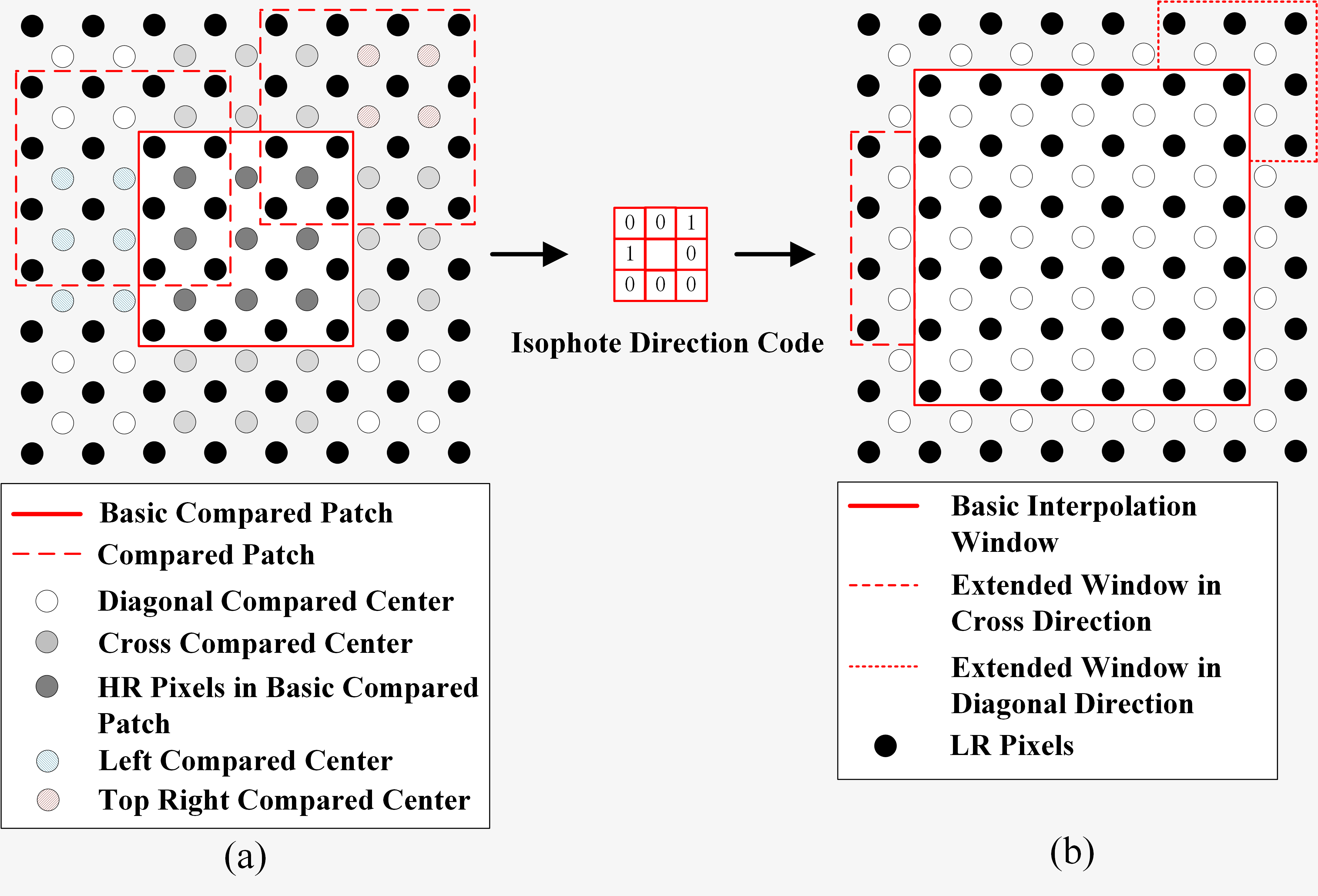
Fig. 3. Illustrations for the window extension. (a) Center locations of the compared patches along cross and diagonal directions. (b) The extended result along the diagonal top-right and the cross left direction.
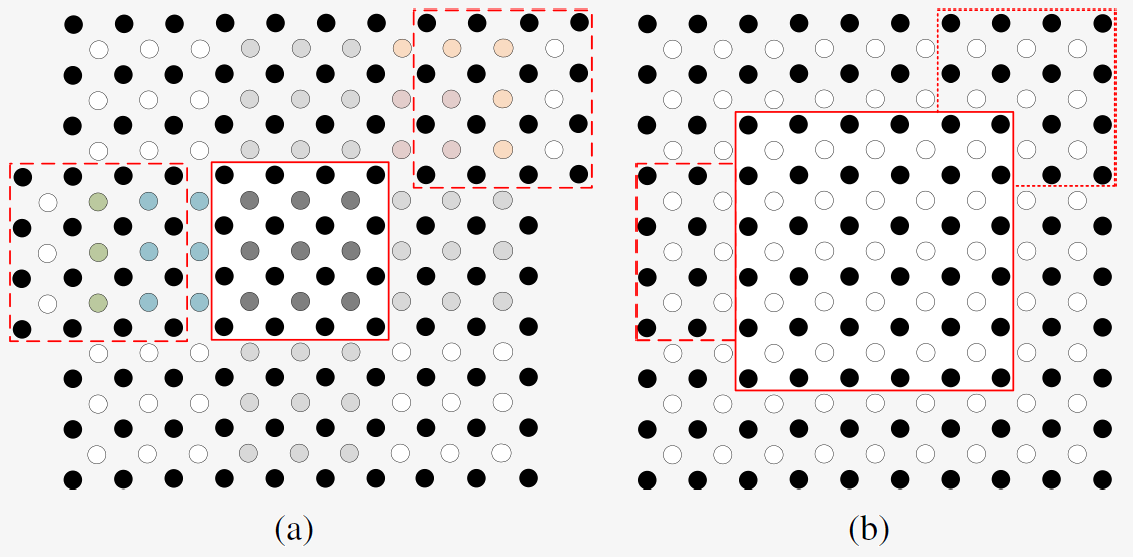
Fig. 3. Illustrations for another kind of window extension.
Results
They include the new edge directed interpolation (NEDI) [1], the soft-decision adaptive interpolation (SAI) [2], the iterative curvature-based interpolation (ICBI) [3], the adaptive general scale interpolation (AGSI) [4], the segment adaptive gradient interpolation (SAGA) [5], the sparse mixing estimators (SME) [6] and the nonlocal autoregressive modeling (NARM) [7].
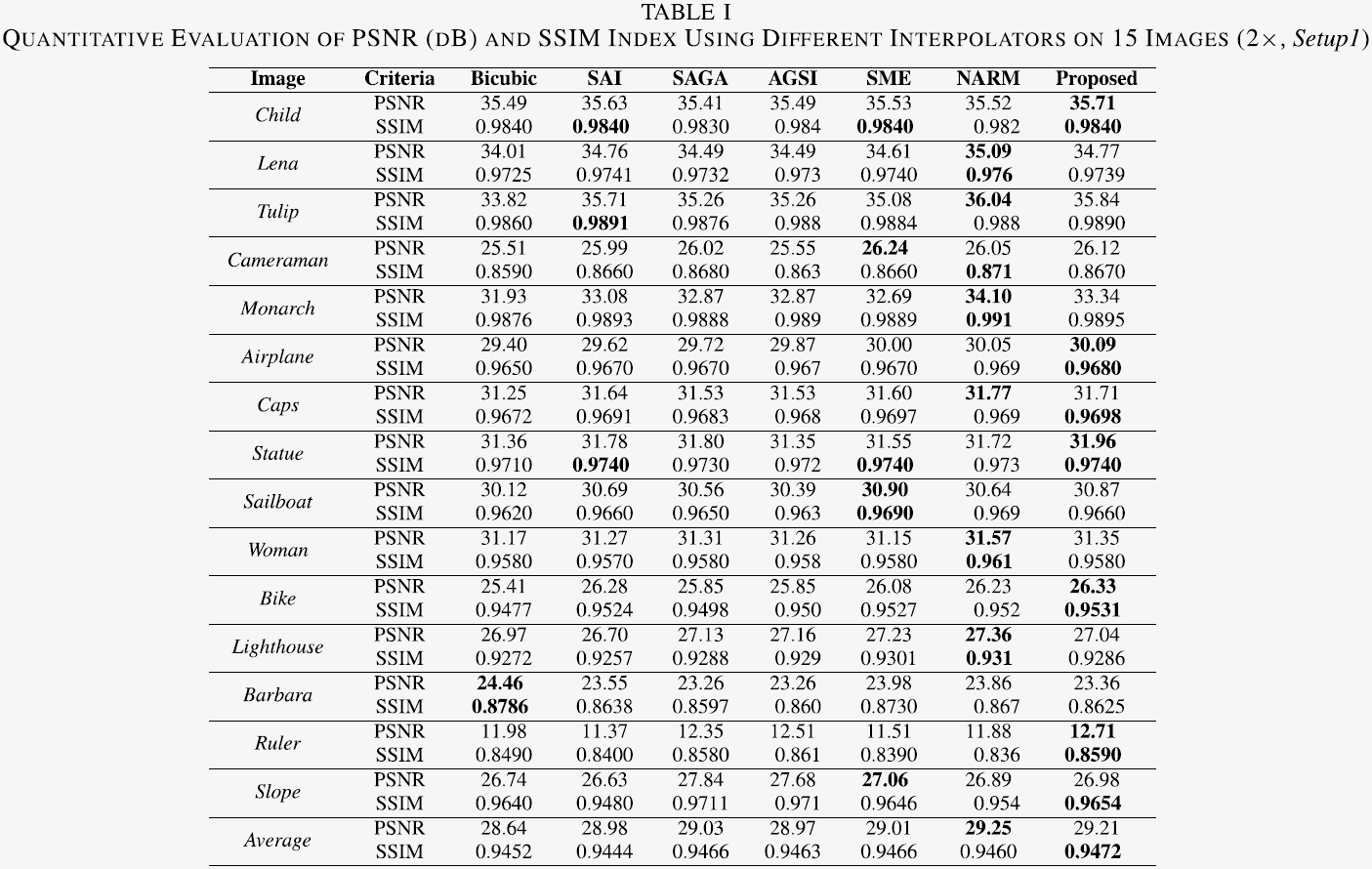

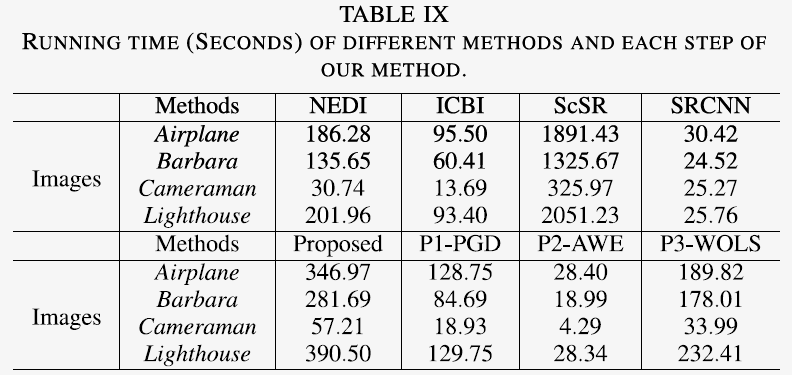
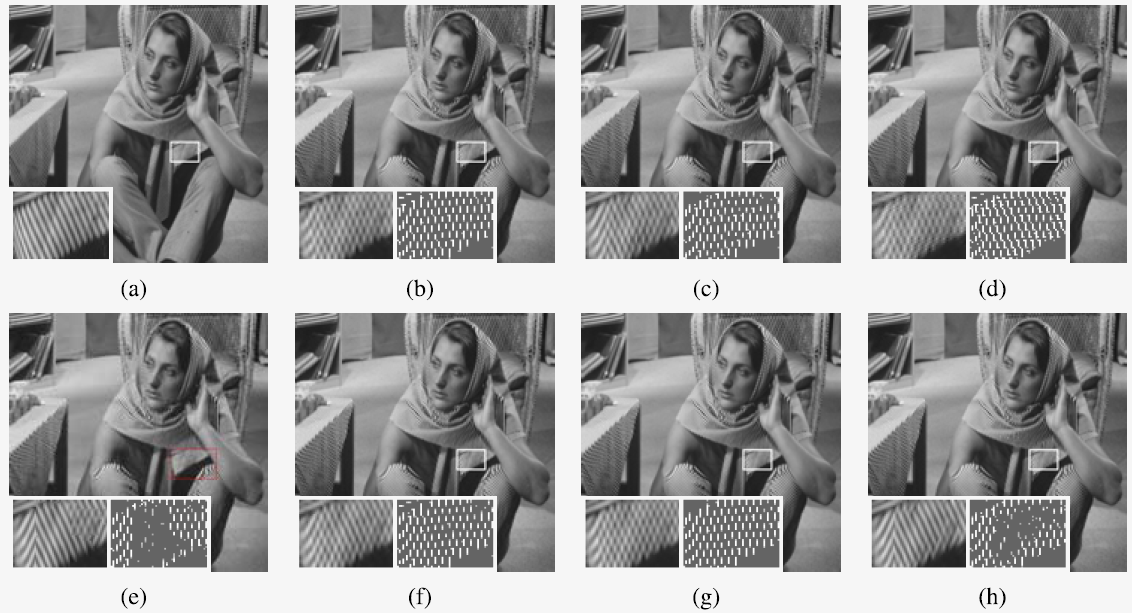 Fig. 4. Visual comparisons between different algorithms for the image Barbara (2times). (a) Original. (b) Bicubic. (c) SAI. (d) SAGA. (e) AGSI. (f) SME. (g) NARM. (h) Proposed. The bottom-left sub-image shows the local magnification of interpolation results, and the bottom-right sub-image shows the difference map between the local original image and the interpolation result.
Fig. 4. Visual comparisons between different algorithms for the image Barbara (2times). (a) Original. (b) Bicubic. (c) SAI. (d) SAGA. (e) AGSI. (f) SME. (g) NARM. (h) Proposed. The bottom-left sub-image shows the local magnification of interpolation results, and the bottom-right sub-image shows the difference map between the local original image and the interpolation result.
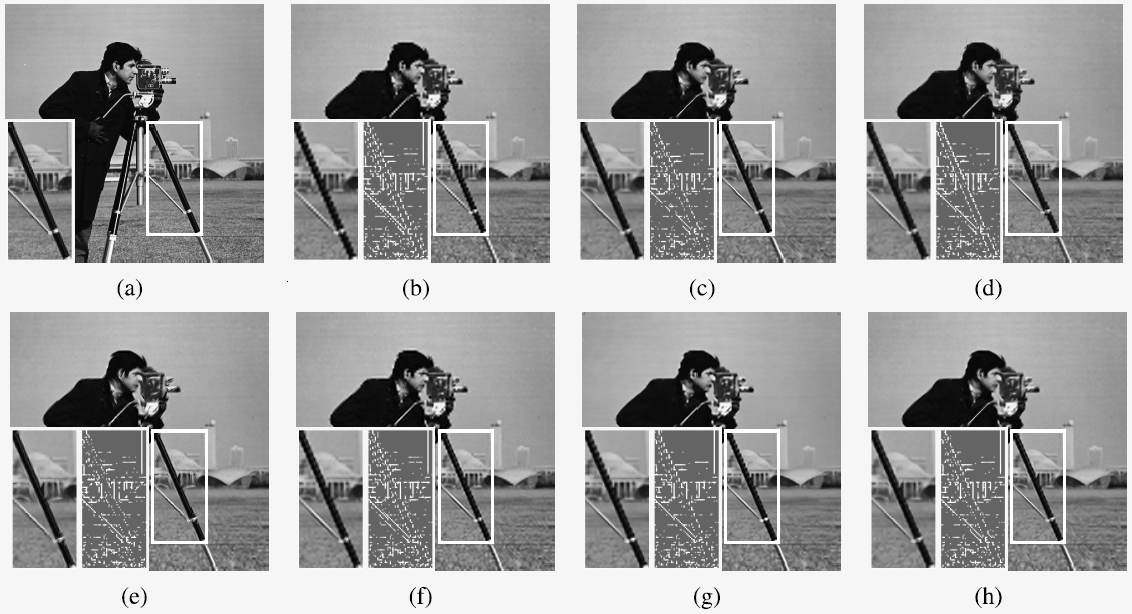 Fig. 5. Visual comparisons between different algorithms for the image Cameraman (2times). (a) Original. (b) Bicubic. (c) SAI. (d) SAGA. (e) AGSI. (f) SME. (g) NARM. (h) Proposed. The bottom-left sub-image is the local magnification of interpolation results, and the bottom-right sub-image is the difference map between the local original image and the interpolation result.
Fig. 5. Visual comparisons between different algorithms for the image Cameraman (2times). (a) Original. (b) Bicubic. (c) SAI. (d) SAGA. (e) AGSI. (f) SME. (g) NARM. (h) Proposed. The bottom-left sub-image is the local magnification of interpolation results, and the bottom-right sub-image is the difference map between the local original image and the interpolation result.
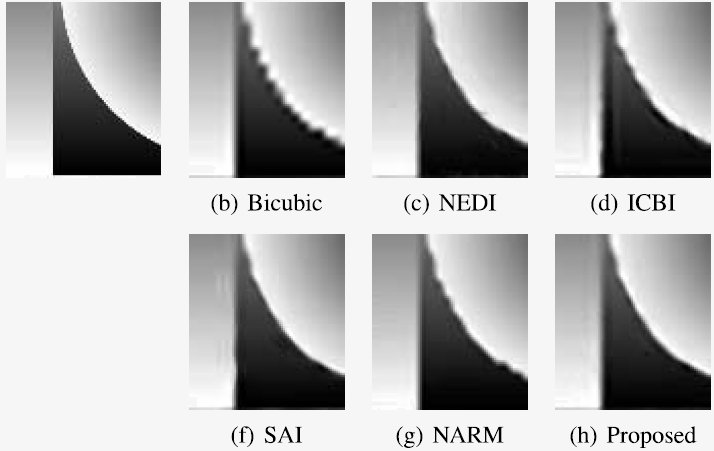
Fig. 6. Visual comparisons between different algorithms for the image Cameraman (2times). (a) Original. (b) Bicubic. (c) SAI. (d) SAGA. (e) AGSI. (f) SME. (g) NARM. (h) Proposed. The bottom-left sub-image is the local magnification of interpolation results, and the bottom-right sub-image is the difference map between the local original image and the interpolation result.
Download
Citation
@ARTICLE{Yang2017_Interp, author={W. Yang and J. Liu and M. Li and Z. Guo}, journal={IEEE Trans. on Circuits and Systems for Video Technology}, title={Isophote-Constrained Autoregressive Model with Adaptive Window Extension for Image Interpolation}, year={2016}, volume={PP}, number={99}, pages={1-1}, month={},}
Reference
[1] X. Li and M. Orchard, “New edge-directed interpolation,” IEEE Trans. on Image Processing, vol. 10, no. 10, pp. 1521–1527, Oct. 2001.
[2] X. Zhang and X. Wu, “Image interpolation by adaptive 2-D autoregressive modeling and soft-decision estimation,” IEEE Trans. Image Process., vol. 17, no. 6, pp. 887–96, 2008.
[3] A. Giachetti and N. Asuni, “Real-time artifact-free image upscaling,” IEEE Trans. Image Process., vol. 20, no. 10, pp. 2760–8, 2011.
[4] M. Li, J. Liu, J. Ren, and Z. Guo, “Adaptive general scale interpolation based on weighted autoregressive models,” IEEE Trans. Circuits Syst. Video Technol., vol. PP, no. 99, pp. 1–1, 2014.
[5] C. M. Zwart and D. H. Frakes, “Segment adaptive gradient angle interpolation,” IEEE Trans. Image Process., vol. 22, no. 8, pp. 2960–9, 2013.
[6] S. Mallat and G. Yu, “Super-resolution with sparse mixing estimators,” IEEE Trans. Image Process., vol. 19, no. 11, pp. 2889–900, 2010.
[7] W. Dong, L. Zhang, R. Lukac, and G. Shi, “Sparse representation based image interpolation with nonlocal autoregressive modeling,” IEEE Trans. Image Process., vol. 22, no. 4, pp. 1382–94, 2013.